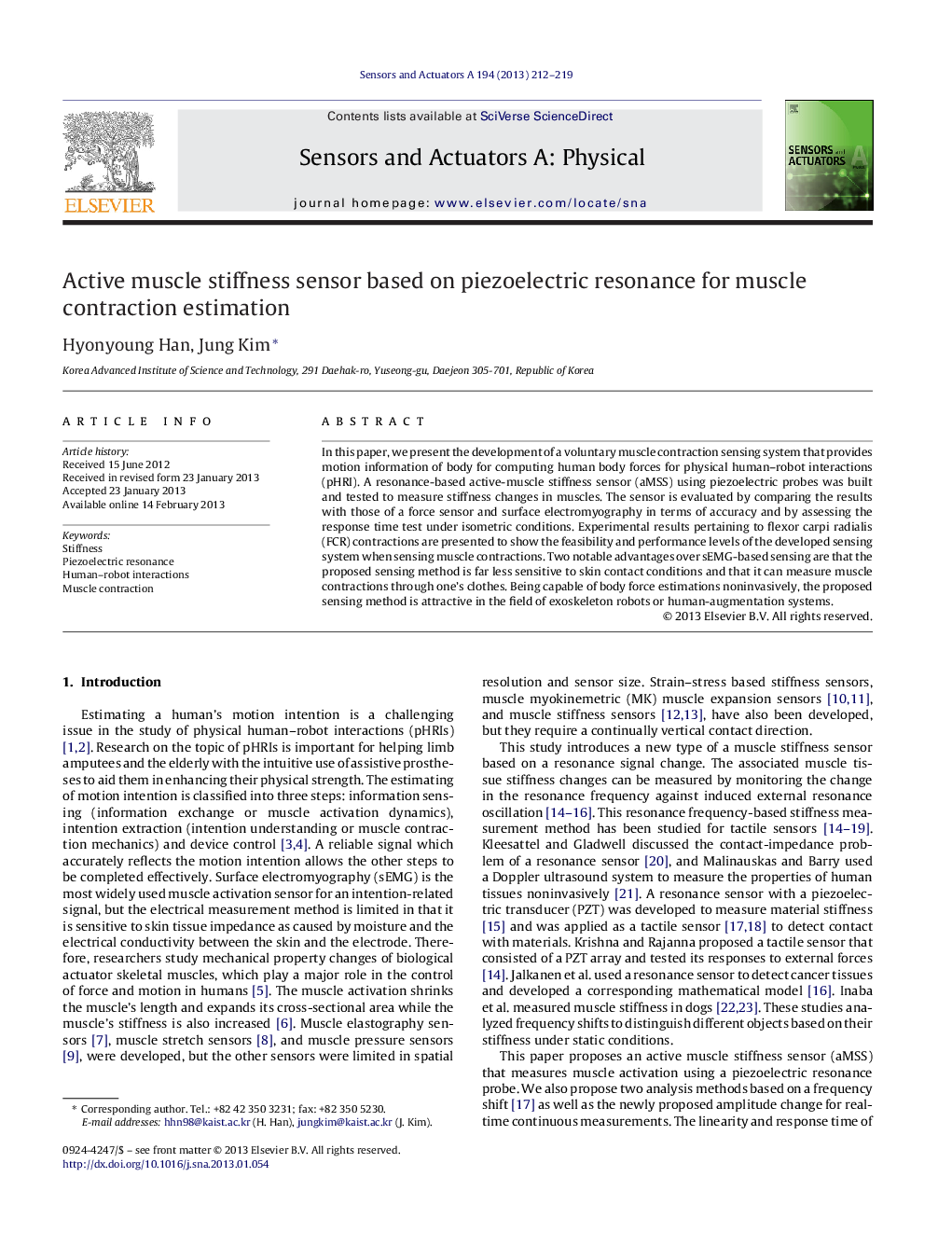| Article ID | Journal | Published Year | Pages | File Type |
|---|---|---|---|---|
| 739681 | Sensors and Actuators A: Physical | 2013 | 8 Pages |
In this paper, we present the development of a voluntary muscle contraction sensing system that provides motion information of body for computing human body forces for physical human–robot interactions (pHRI). A resonance-based active-muscle stiffness sensor (aMSS) using piezoelectric probes was built and tested to measure stiffness changes in muscles. The sensor is evaluated by comparing the results with those of a force sensor and surface electromyography in terms of accuracy and by assessing the response time test under isometric conditions. Experimental results pertaining to flexor carpi radialis (FCR) contractions are presented to show the feasibility and performance levels of the developed sensing system when sensing muscle contractions. Two notable advantages over sEMG-based sensing are that the proposed sensing method is far less sensitive to skin contact conditions and that it can measure muscle contractions through one's clothes. Being capable of body force estimations noninvasively, the proposed sensing method is attractive in the field of exoskeleton robots or human-augmentation systems.
